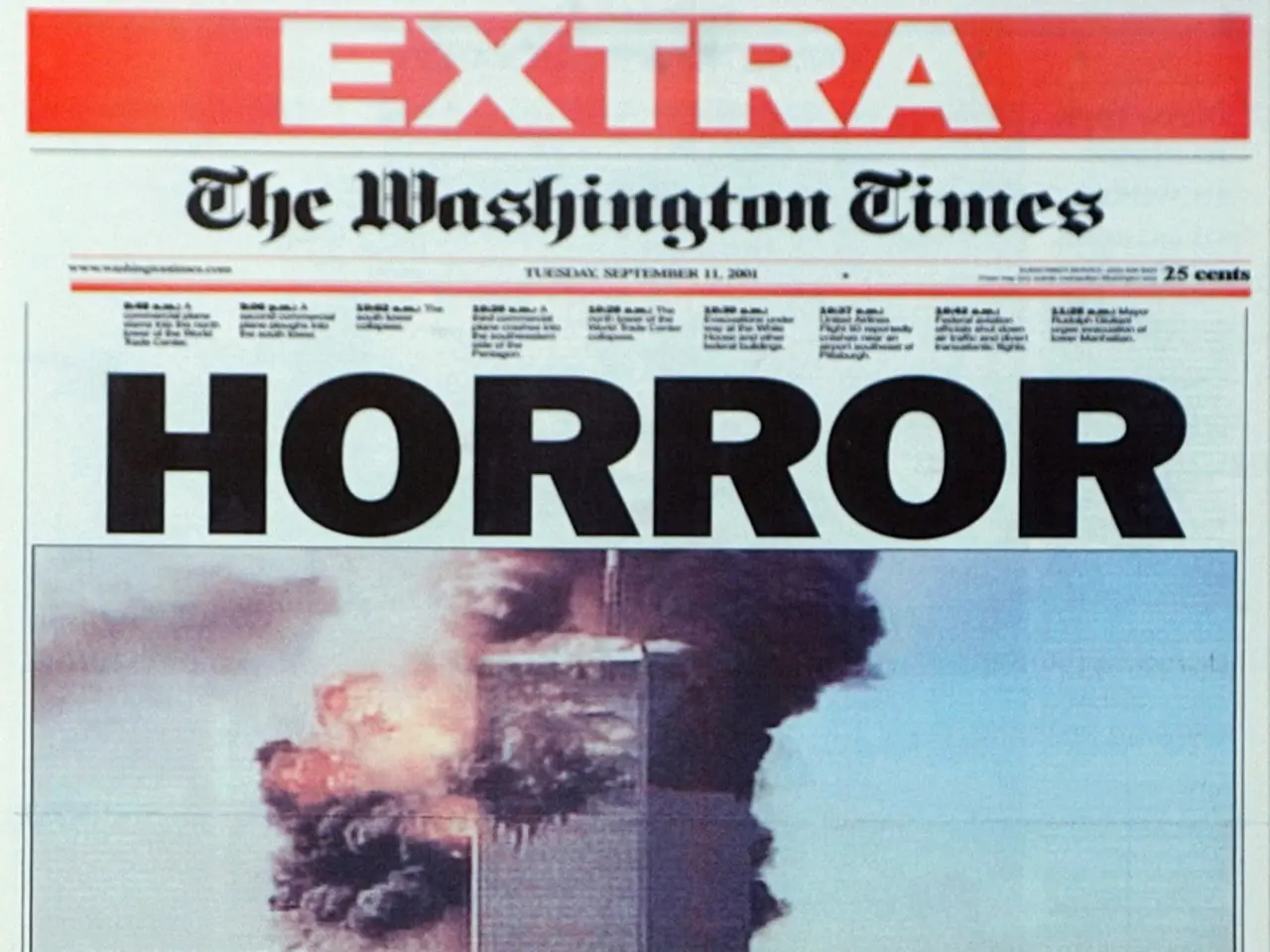Wall Street's resurrection is being driven by Trump's tariffs
In the financial landscape of August 2025, the Dow Jones, S&P 500, and Nasdaq indices continue to navigate through a complex web of influences, with tariffs remaining a significant factor.
Volatility and Uncertainty
The ongoing tariff saga contributes to periodic volatility in the markets, as investors react to news of tariff changes or potential trade escalations. The uncertainty surrounding trade policies tends to create a cautious sentiment in the stock markets.
Sector-Specific Effects
The impact of tariffs on US stocks is sector-specific. For instance, the industrials and manufacturing sectors often face increased costs due to tariffs on raw materials and intermediate goods, leading to pressure on their stock prices, significantly affecting parts of the Dow Jones.
On the other hand, the Nasdaq, which is tech-heavy, is impacted by tariffs mostly through supply chain disruptions and higher component costs. However, many large tech companies have diversified supply chains, somewhat mitigating the impact.
The S&P 500’s consumer goods sectors see mixed effects—some companies pass tariff costs to consumers, while others face reduced margins.
Inflation and Interest Rates Influence
Tariffs contribute to inflationary pressures by increasing import costs. This can lead the Federal Reserve to raise interest rates, which generally weighs on stock valuations across all indices.
Geopolitical and Trade Negotiations
Market reactions often hinge on expectations about trade negotiations rather than tariffs themselves. Positive developments can lead to rallies, while escalations cause downturns.
Recent Developments
On Monday, the Dow Jones Index lost 0.1% to 44,112 points. Caterpillar reported mixed results for the second quarter, with strong order intakes and signs of continued price pressure.
Safe havens such as bonds and gold were in demand, with the 10-year yield barely changing at 4.20 percent. The trade balance for June showed a smaller deficit than expected.
On the oil market, fears of oversupply continued to dominate, following OPEC+ members' announcement of an increase in production. Trump plans to introduce tariffs on semiconductors and pharmaceuticals "within the next week or so", and the tariffs on medicines could eventually reach up to 250%.
There were 1,563 gainers, 1,205 losers, and 50 unchanged stocks at the NYSE on Monday. The gold price continued to rise after the strong gain the previous day, gaining 0.1 percent to $3,379.
Brent and WTI prices recorded their fourth consecutive day of losses, falling by up to 1.7 percent. The S&P 500 fell by 0.5%, and the Nasdaq indices dropped by 0.7%.
Palantir, a software and data analysis specialist, reported convincing business figures and raised its outlook, causing its stock to gain 7.9%. Trump also mentioned plans to significantly increase tariffs on Indian goods "in the next 24 hours" from the planned 25%.
The activity of US service providers grew slower than expected in July. Trump's threat to impose 35% tariffs on EU goods, instead of the 15% announced in an agreement last month, adds to the uncertainty in the global market.
However, the US Dollar has room for further recovery due to growth and interest rate differentials remaining favorable, according to eToro analyst Lale Akoner. She added that it's unlikely the US Federal Reserve will cut interest rates more than twice this year, as inflation is expected to remain high.
This news article aims to provide a clear and concise overview of the current state of the US stock markets, focusing on the factors influencing their performance. It is crucial for investors to stay informed and adapt their strategies accordingly in this dynamic economic environment.
- In the ongoing trade tensions, specific policies such as community policy and employment policy could play a significant role in shaping the business landscape, as they may influence corporate costs, competitiveness, and ultimately, stock prices of US companies.
- For investors looking to engage in the stock market, understanding the potential impact of tariffs on various sectors and the role of finance, investing, and the stock-market within the overall economic context is crucial for strategic decision-making in the volatile August 2025 financial landscape.






